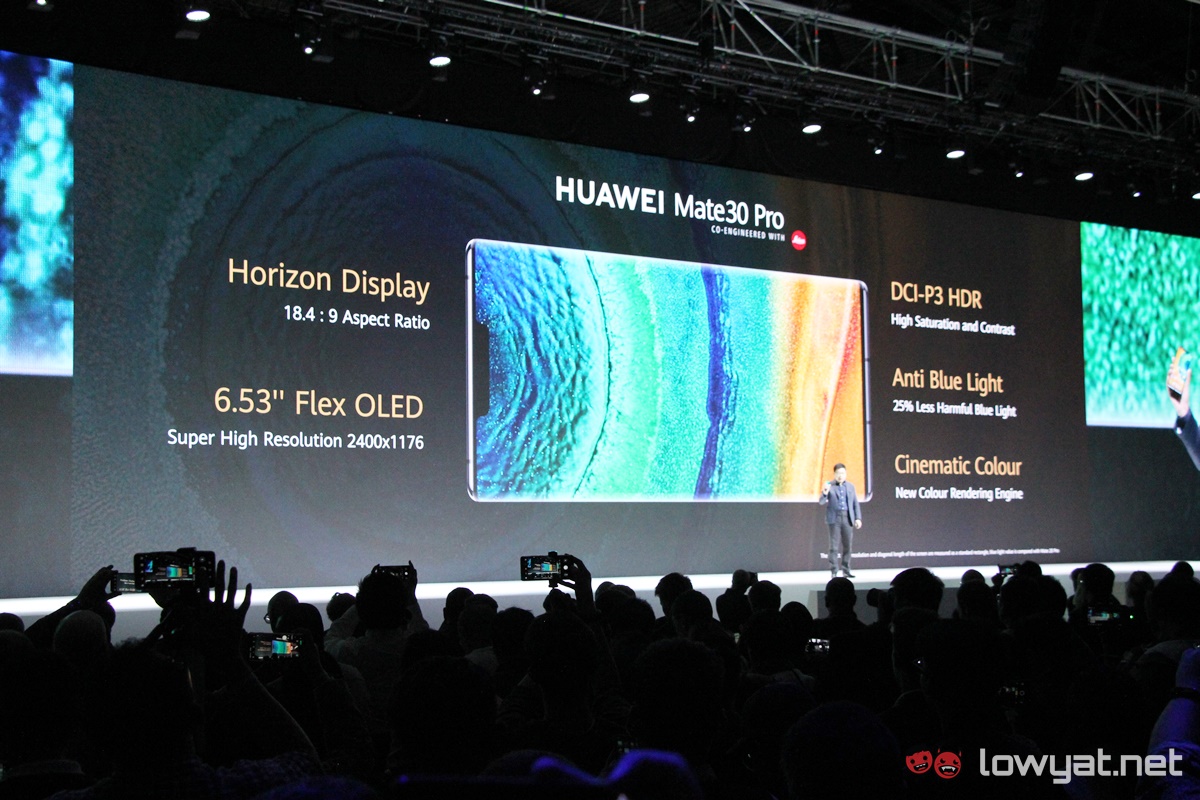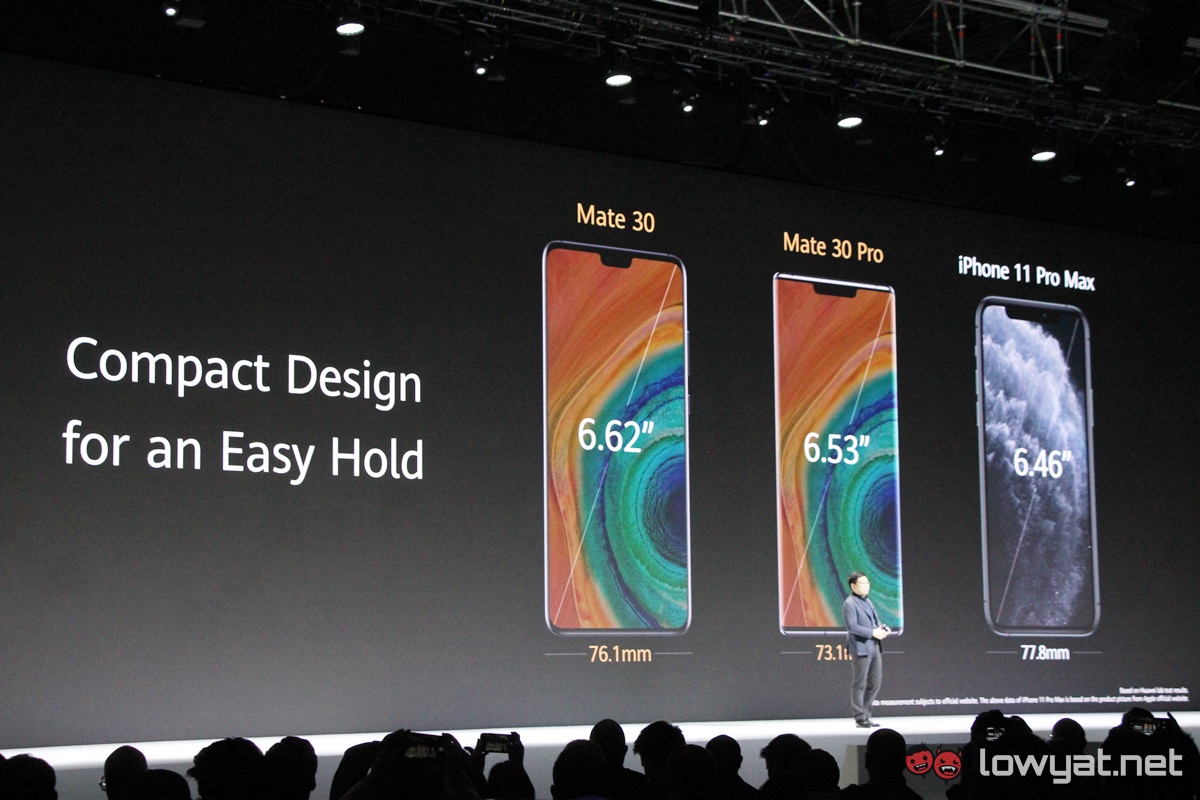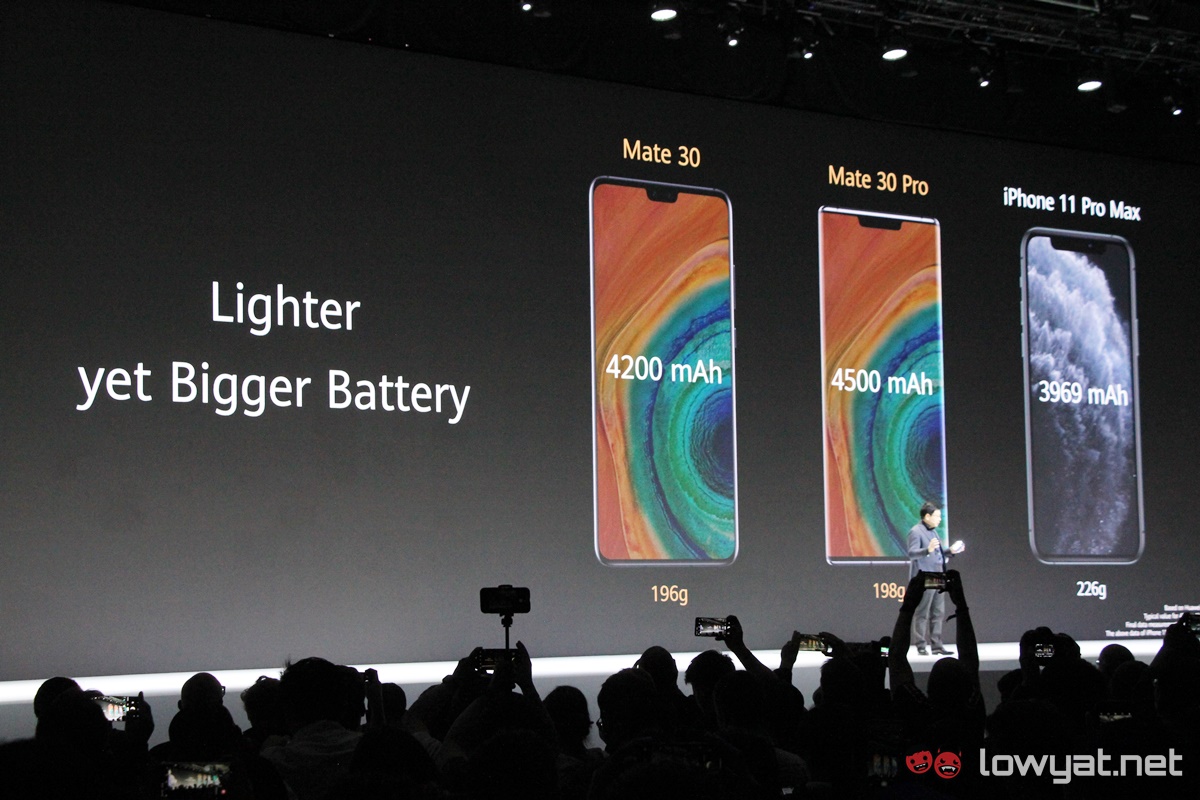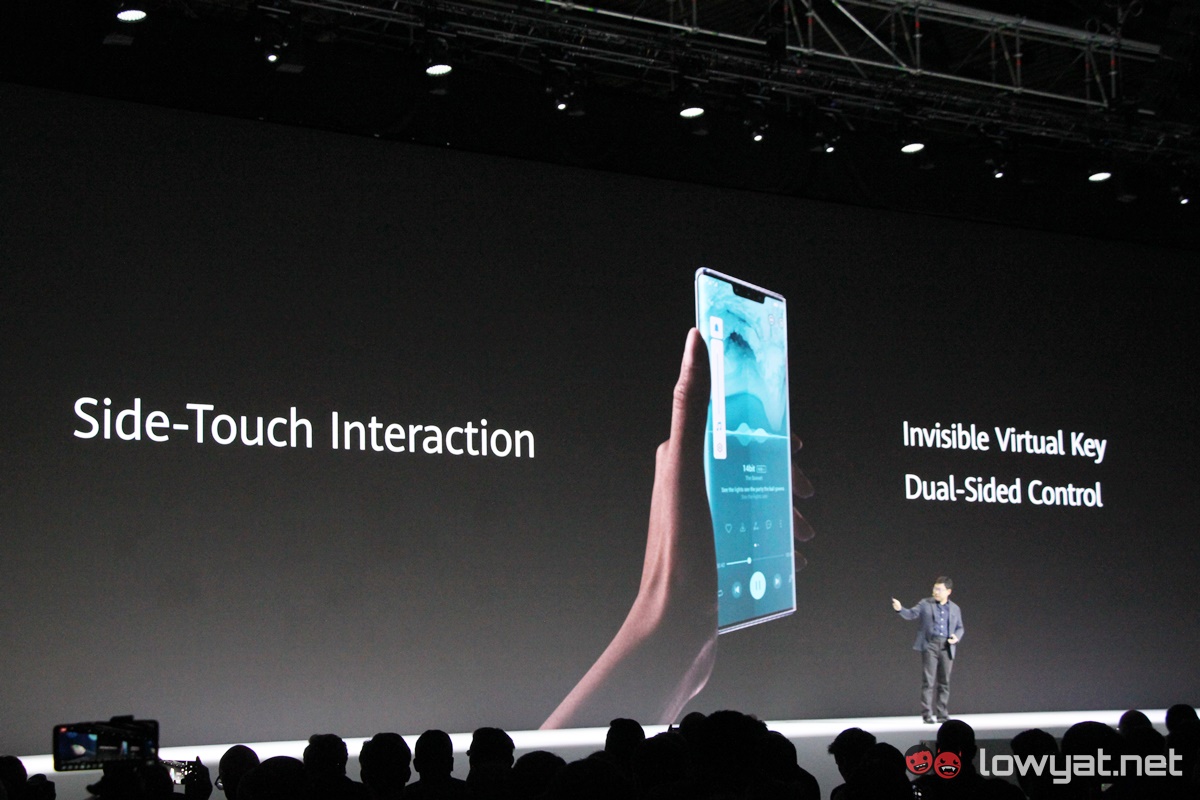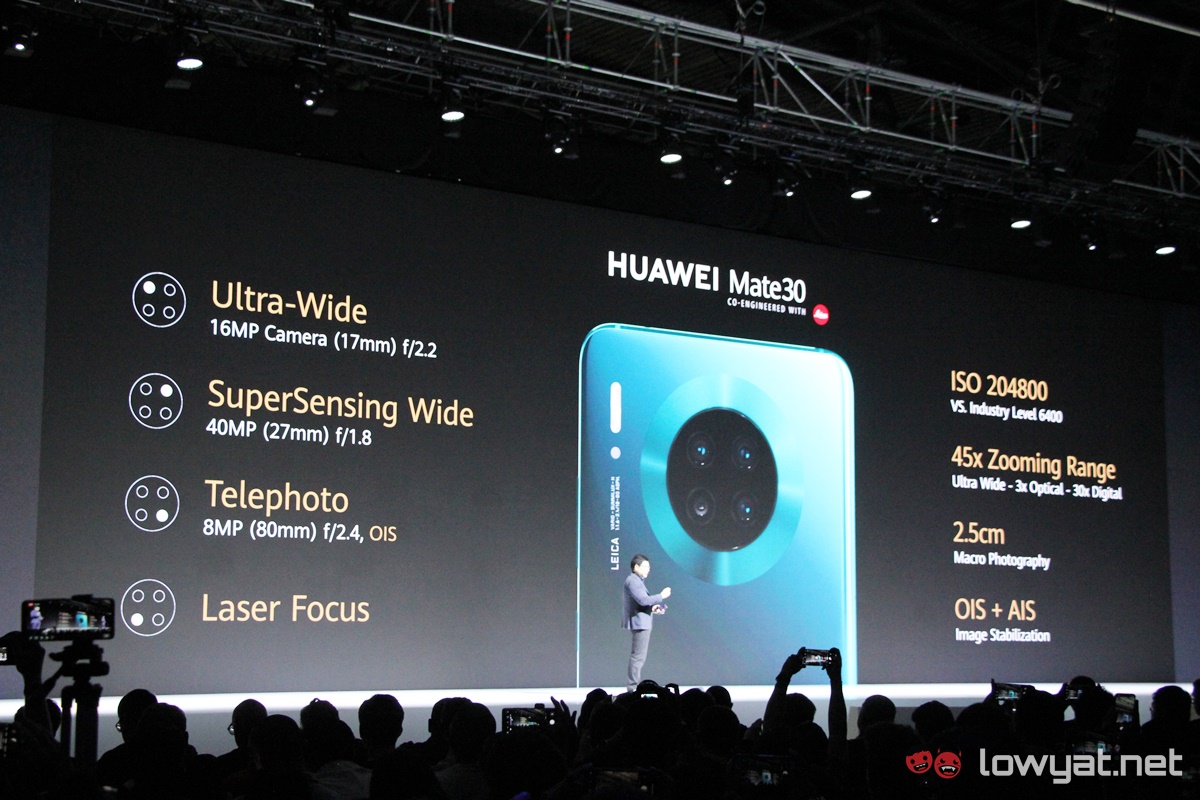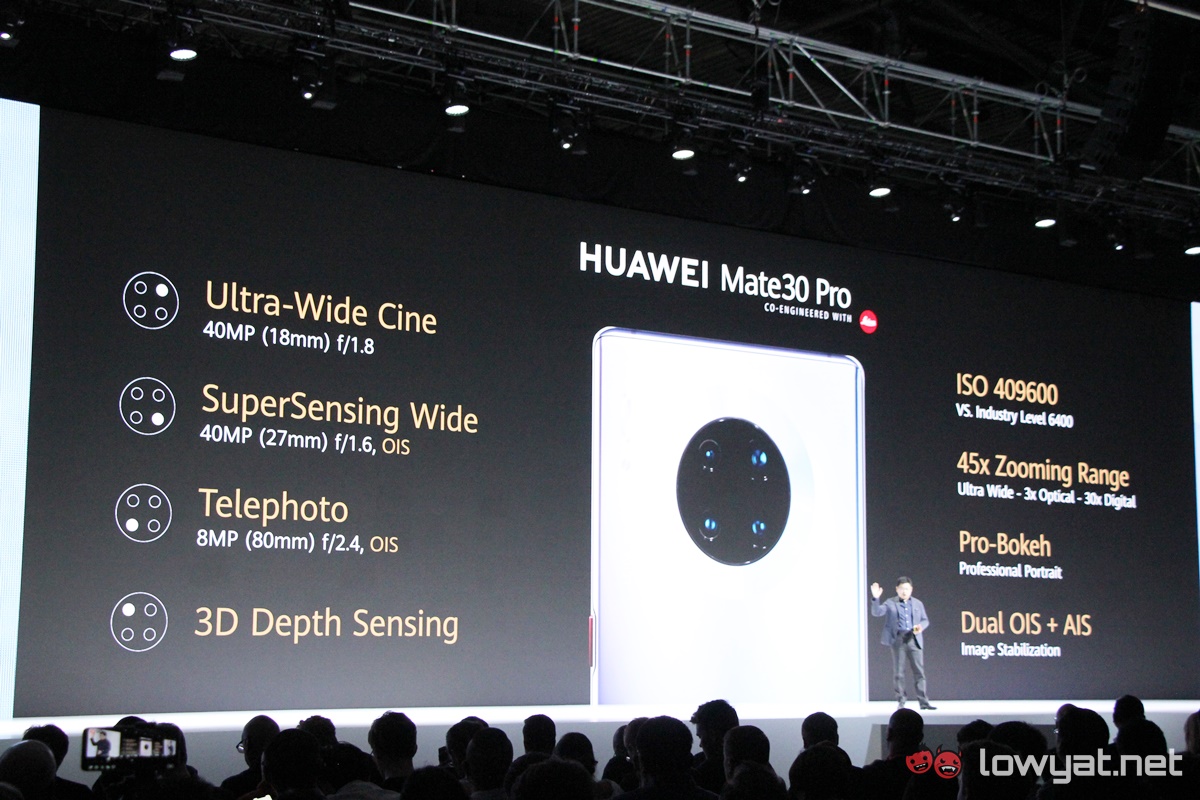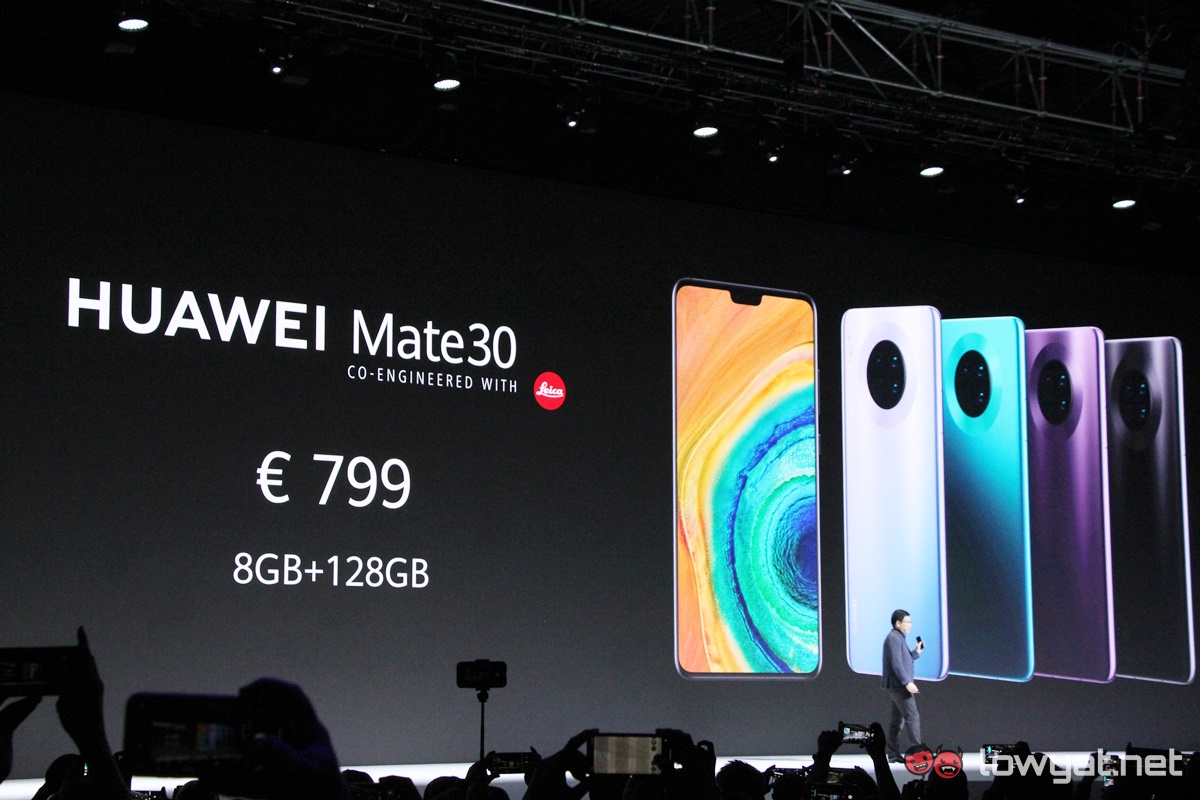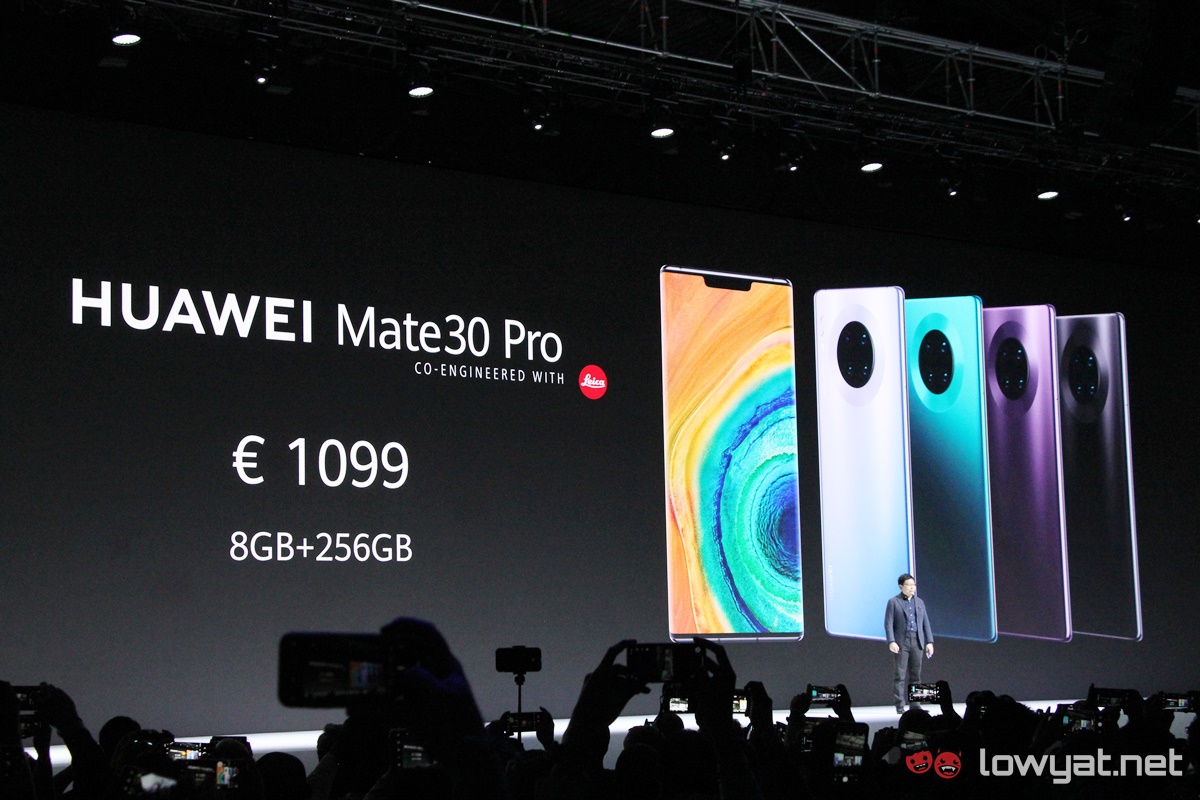Firstly, both the Mate 30 and Mate 30 Pro are fitted with Huawei’s newest chipset, the Kirin 990 5G. The new chipset is the first to integrate a 5G unit on to its chip. Further, the phones are equipped with Huawei’s new 18.4: 9 Horizon display. In terms of memory, both devices will house 8GB RAM. Regarding the display sizes, the Mate 30’s display measures in at 6.62-inch, while the Mate 30 Pro’s display is smaller at 6.53-inches, albeit with a larger notch than the Mate 30. Ironically, Huawei says that the notch on its Mate 30 Pro is still smaller than its competitor, specifically, the recently launched iPhone 11 Pro.
In regards to their battery sizes, the Mate 30 houses a large 4200mAh, while the Mate 30 Pro houses an even larger 4500mAh. In addition to the massive batteries, both devices also include Huawei’s 40W wired and 27W wireless SuperCharge technology,
One piece of technology making its debut with the Mate 30 Pro is Huawei’s Side-Touch buttonless technology. The new feature essentially allows Huawei to remove physical volume buttons; instead, Side-Touch allows users to control the volume by simply sliding your thumb up or down the sides of the phones. The feature’s not just relegated to volume control either. When in camera mode, Side-Touch also acts as a virtual shutter button, and just like the volume control, the feature is accessible on both sides, regardless of your camera orientation.
That brings us to the next part of the Mate 30 Series: the main quad-camera modules. Despite sporting the same number of camera sensors, believe us when we say that there is a distinction between the two models. In the case of the Mate 30, the phone houses a 16MP f/2.2 ultra-wide + 40MP f/1.8 SuperSensing wide + 8MP f/2.4 telephoto lens with OIS + Laser focus. Adding to its impressiveness, the camera has a maximum ISO of 204800 and a 45X zooming range (3x Optical, 30x Digital). Moving on to the Mate 30 Pro, the phone’s quad-camera system comprises a 40MP f/1.8 ultra-wide Cine camera, a 40MP f/1.6 SuperSensing Camera, an 8MP f/2.4 Telephoto lens with OIS, and a 3D depth-sensing camera instead of laser focus. On top of that, the ISO range is even greater, topping out at 409600.
The Mate 30 Pro’s camera isn’t just limited to photography either. Thanks to the Cine Camera sensor, the phone is also capable of recording 4K video at 60 fps, capture time-lapse video in 4K HDR+, and at maximum ISO level of 51200.
The Huawei Mate 30 and Mate 30 Pro are slated for release in Europe this October. In terms of price, the Mate 30 with 8GB+128GB will retail for 799 Euros, while the 8GB+256GB will retail for 1099 Euros. There’s also a 5G variant of the Mate 30 Pro that retails for 1199 Euros, although there’s no word as to when this model will be reaching our shores.
At the time of writing, Huawei Malaysia did not provide a local pricing or availability.
